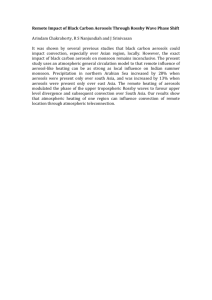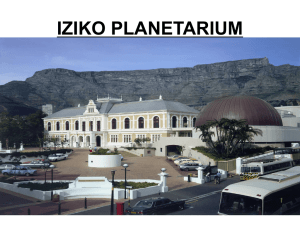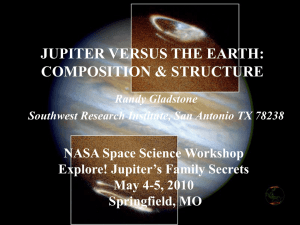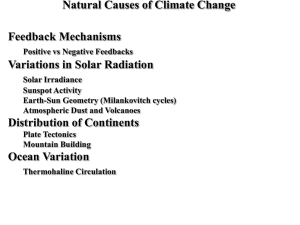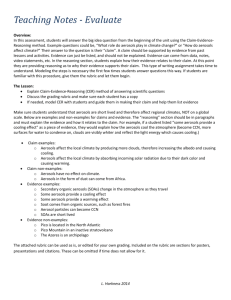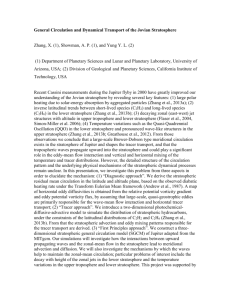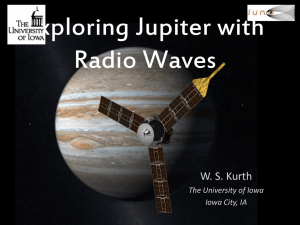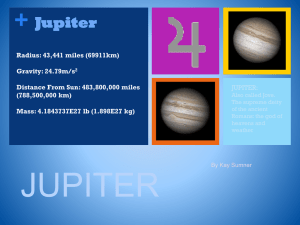Xi Zhang
advertisement
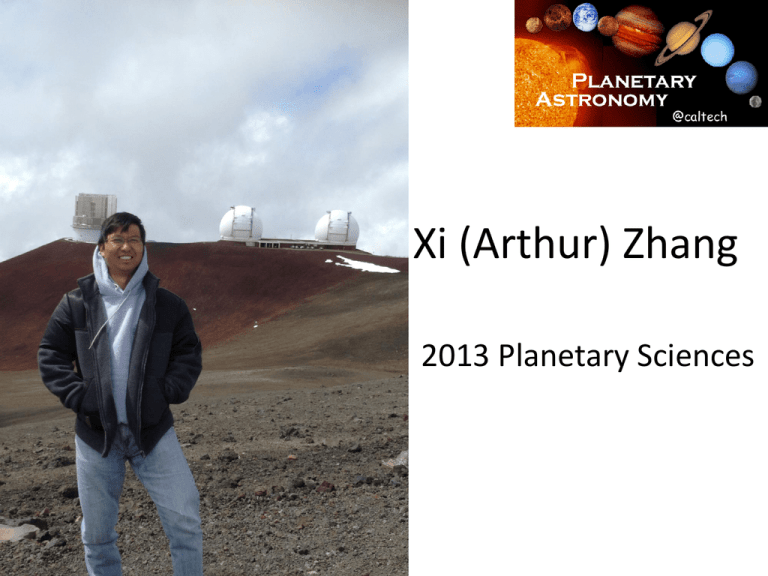
Xi (Arthur) Zhang 2013 Planetary Sciences Background • • • • B.S., Space Physics, Peking University, 2007 M.S., Planetary Science, Caltech, 2009 Defended in November, 2012 9 first author journal papers, 7+ non-first author papers, ~30 conference proceedings • Ph.D. Thesis: “Aerosols and Chemistry in the Planetary Atmospheres” Thesis: Aerosols and Chemistry in the Planetary Atmospheres • • • • • • Multidisciplinary how do they form on Earth (Chapter I) how do they interact with other atmospheric species on Venus (Chapter II) how to determine their properties and distributions on Jupiter (Chapter IV) how do they influence the radiative energy distributions on Jupiter (Chapter III and IV) how do the atmospheric circulation and mixing processes shape the tracer (including aerosols) distributions in general and specifically on Jupiter (Chapter V). Research Methods: • Chapter I and Chapter V are mostly theoretical work, with help of minor numerical simulations • Chapter II is a large photochemical simulation study • Chapters III and IV mix data analysis, information retrieval and computationallyexpensive radiative transfer modeling, although some simple approximate theories are also introduced. • An unexpected sulfur dioxide (SO2) layer is observed in the Venus mesosphere (~100 km) for the first time by both ground-based measurements and Venus Express. We propose that the source of the sulfur oxides could be the photolysis of sulfuric acid (H2SO4) vapor released from aerosols. The new theory fundamentally changes the previous paradigm of atmospheric chemistry in the upper atmosphere of Venus and has implications for the aerosol microphysics and atmospheric circulation that were poorly constrained so far. • Geo-engineering of the stratospheric sulfate layer has been considered as the most affordable as well as an effective method to solve the global warming problem. However, the effect needs to be examined carefully. The atmosphere of Venus contains more than a thousand times sulfur dioxide than the terrestrial atmosphere and therefore can be used for testing the limits of the photochemistry of sulfur species and their impact on climate. The photochemical simulations and subsequent laboratory work will provide more precise evaluation on the effect of geo-engineering. Zhang et al. (2010) Zhang et al. (2012) The Jupiter Project • • • • • • Each step produced at least one paper. Xi provided the first realistic spatial map of Jovian stratospheric aerosols. For the first time, We found the evidences that Jovian stratospheric aerosols have two components: compact sub-micron particles are located in the low latitudes and the rest of the stratosphere is covered by the particles like fractal aggregates composed of about a thousand 10-nm-size monomers. Xi performed the first line-by-line (the most accurate method) calculations of the heating and cooling rates, and provided the first spatial map of radiative energy distributions in the stratosphere of Jupiter. Based on that we finally solved a long-time puzzle in planetary sciences: is the aerosol heating important in the stratosphere of Jupiter? The answer is yes. Xi performed the first two-dimensional chemicaltransport simulation of the stratospheric tracers on Jupiter, including all the necessary processes such as photochemistry, diffusion and advection. Aerosols on Jupiter Other Highlights • Xi has provided a unified physical theory for the condensation process of the secondary organic aerosols (SOAs), which has been lacking for 20 years. This is the theoretical basis to solve the recent puzzles discovered in laboratory and field experiments. Based on his theory, the current aerosol models in the study of climate change may need to be reformulated. And this is his class project. • Xi and Mike Line (my other PhD student) developed the software: CHIMERA (CaltecH Inverse ModEling and Retrieval Algorithms) for extrasolar planets • Xi has been also deeply involved in many other collaborative projects such microphysical modeling on Venus and Saturn’s moon Titan, spacecraft data analysis on Saturn, Neptune, and Titan, atmospheric chemistry on Titan, ozone isotopic chemistry on Earth atmosphere, formation mechanism of jet streams on Jupiter and atmospheric dynamics on Brown Dwarfs, haze detection on extra-solar planets. Conclusion Xi likes to attack very hard problems in a fundamental level, and with novel and interdisciplinary relevance. His originality has led him to many discoveries in the astrophysics and atmospheric sciences.
